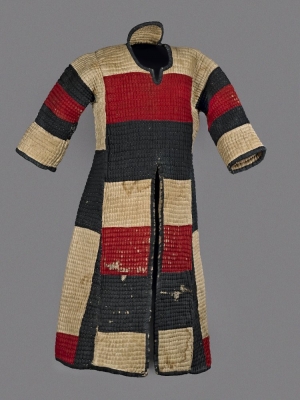According to the British Museum’s Temporary Register (1861-1921, p. 90), it was taken from a Dervish warrior and given to the Museum by Major Ivor Maxse in 1899. This date is significant, as it is likely that the garment was taken from the ‘Dervish’ Mahdi warrior following either the Battle of Atbara (8th April 1898) or the Battle of Omdurman (2nd September 1898), the latter marking the end of the Mahdist state in Sudan.
Major (Frederick) Ivor Maxse (1862-1958), later known as General Sir Frederick Ivor Maxse, became a well-known general during the First World War (1914-1918).
See also the TRC Needles entries on Mahdi tunics and a Mahdi flag.
British Museum online catalogue (retrieved 7th July 2016).
GVE

